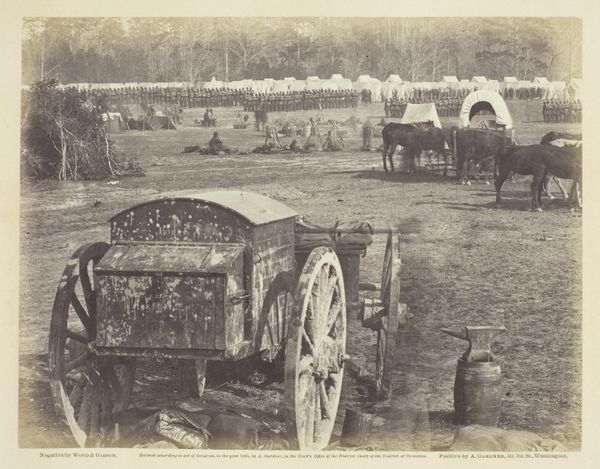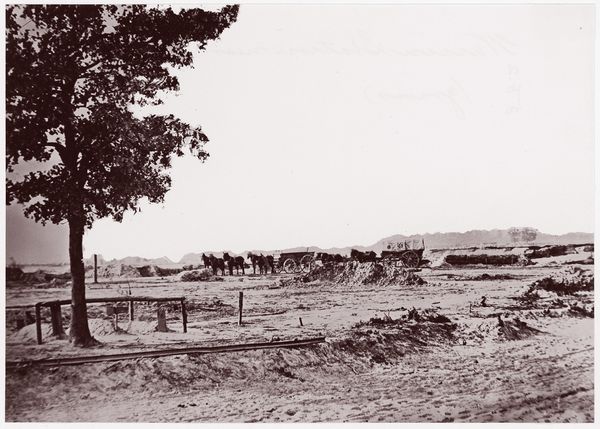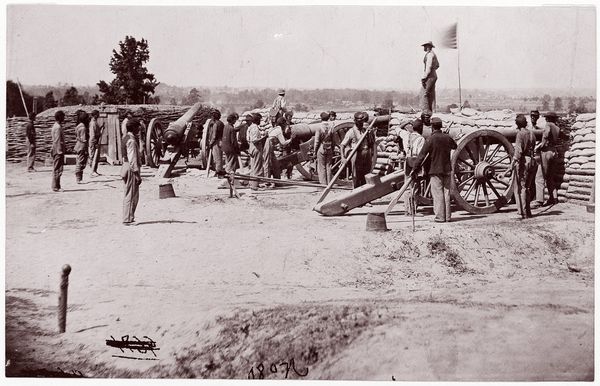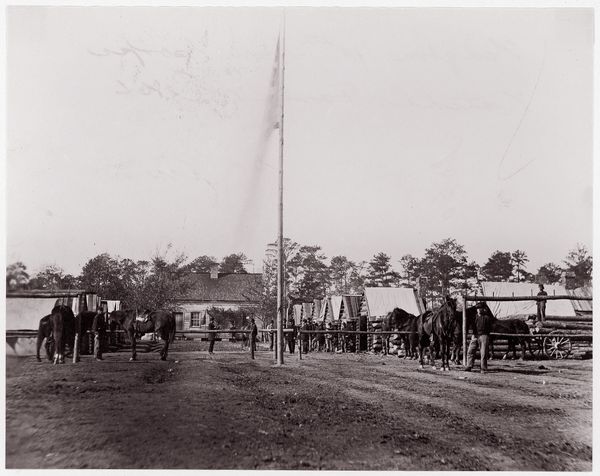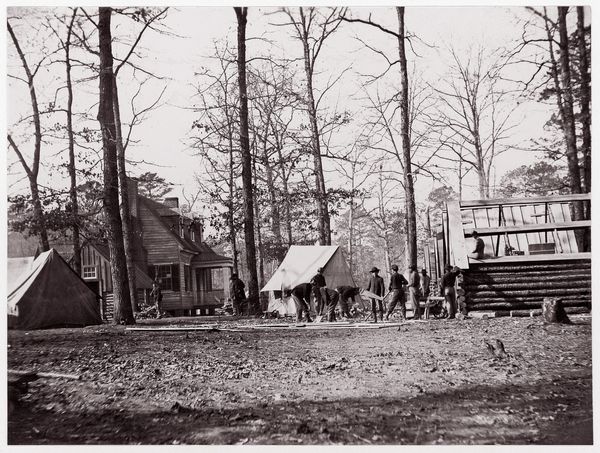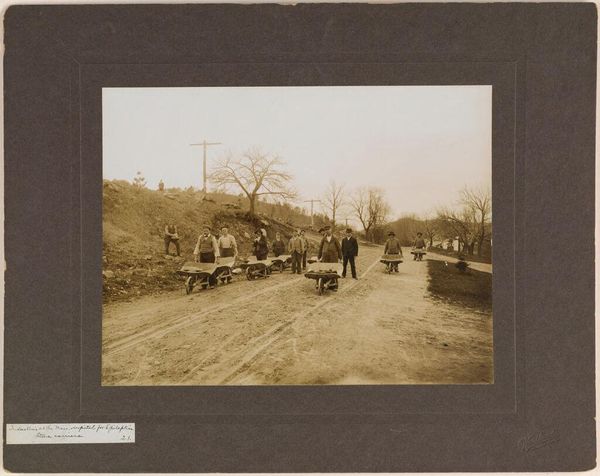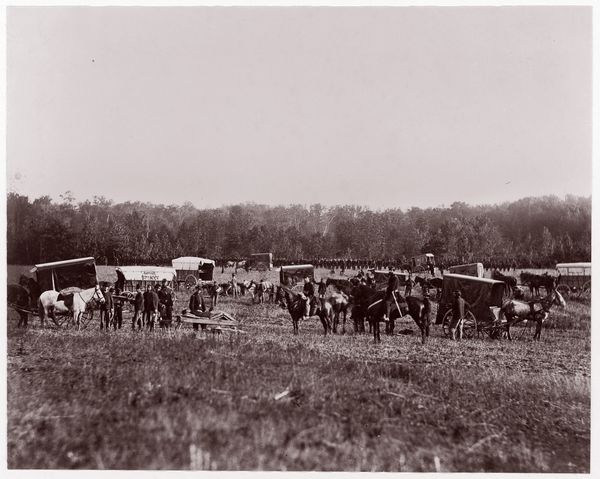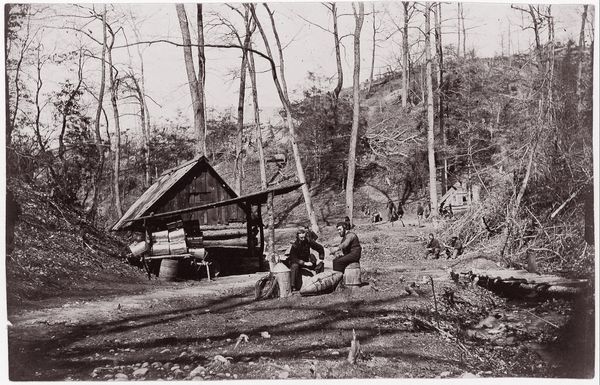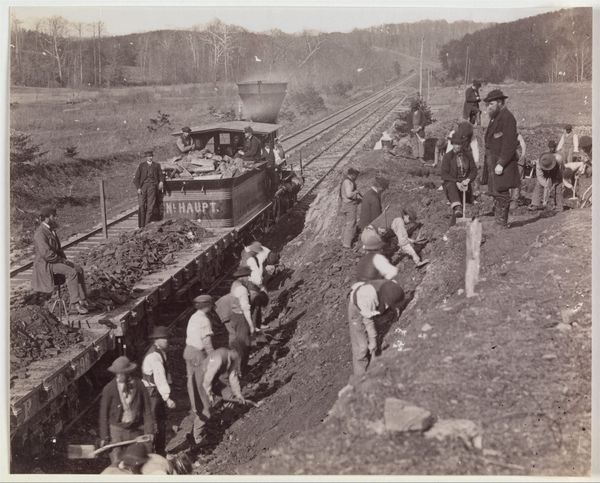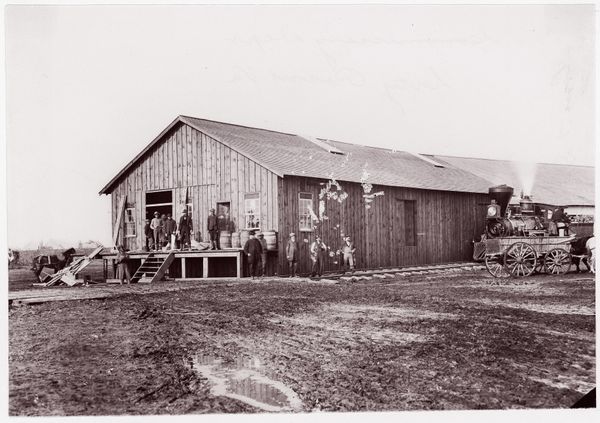
photography, gelatin-silver-print
#
black and white photography
#
war
#
landscape
#
outdoor photograph
#
photography
#
soldier
#
horse
#
gelatin-silver-print
#
monochrome photography
#
monochrome
Copyright: Public Domain
Editor: Here we have Andrew Joseph Russell's "Crow's Nest, Battery and Lookout," a gelatin-silver print from 1864. The first thing that strikes me is how still everything seems, despite it depicting what I imagine to be an active military site. How do you interpret this photograph? Curator: Consider how photography functions here. Russell captures not just a scene but also a specific moment pregnant with symbolic meaning during a divisive conflict. Notice the array of tents juxtaposed against the stark, skeletal trees; the tents provide shelter, representing fragility, while the barren branches are indicative of struggle and endurance during wartime. It feels like a still life, but the potential for violent action permeates everything, don’t you think? Editor: It definitely creates tension knowing this serenity is likely temporary. Is there significance in the figures seeming so...idle? Curator: Precisely. Consider how they embody the emotional and psychological weight of soldiers caught between action and stasis. They are placeholders, representing not just individuals but the collective memory of war: the anxious waiting, the interrupted lives. The horse and rider act as almost allegorical figures – potential harbingers of change, good or ill, within the larger narrative. Are they symbols, do you think, or part of something deeper? Editor: Perhaps the symbols lie in that in-between space—waiting, anticipating, living on the edge of constant threat? Thank you! Curator: Exactly. It’s the potent space where history and human experience converge in a single frame, constantly informing our understanding. A rich cultural artifact that we can all think about.
Comments
No comments
Be the first to comment and join the conversation on the ultimate creative platform.

